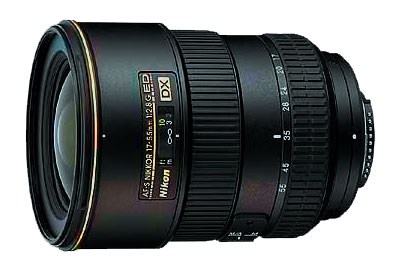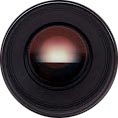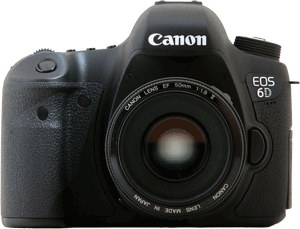First vs Third Party Lenses
When it comes to first vs third party lenses for digital SLR cameras, there's usually a tradeoff: price vs. quality.
Third party lenses - ones not made by the same companies that make the cameras - are often MUCH less expensive than the name-brand lenses.
In some cases they are less expensive because the quality is not at the same level as a comparable lens made by a camera manufacturer.
However, the old saying "you get what you pay for" doesn't necessarily always apply to third party lenses. Some lenses are exceptional, and can capture images that are on a par - if not better - than the name-brand ones.
This makes them a tempting alternative for anyone who's not keen on spending a month's hard-earned salary on a DSLR lens.
First and Third Party Defined
Before I get too much futher into this analysis, I figured it would be good to clarify the different players involved.
When I talk about first party lenses, I am referring to lenses made by the camera companies themselves: Canon, Nikon, Pentax, Olympus and Sony (a.k.a. Konica Minolta).
A couple of important points:
- First party lenses are NOT interchangeable with cameras from different manufacturers: a Canon lens will not attach to a Pentax camera and vice versa
- The lenses are interchangeable with different camera models from the same manufacturer: a single Canon lens will work with every Canon digital SLR camera
When it comes to third party lenses, there are three major companies: Sigma, Tamron and Tokina.
The third party lenses don't play by quite the same rules as the first party lenses. The same third party lens can be attached to cameras from different manufacturers, so long as the lens mount is correct.
For example, the Tamron 17-50mm f/2.8 zoom comes with a Canon mount (to attach to all Canon digital SLRs) and a Nikon mount (to attach to all Nikon digital SLRs).
Once you've bought a lens with a specific mount type it won't attach to cameras that don't share the same lens mounting system (so you can't swap your Tamron lens with a Canon mount out for a Nikon mount at a later date).
First Party Advantages

When the battle is waged between first and third party lenses, the first party lenses have the advantage on two fronts:
- Quality - the build quality of first party lenses (especially those made by Canon and Nikon) is part of the reason why many professional photographers don't use anything else.
- Compatibility - since all modern lenses are electronic, it makes sense that the camera manufacturers are the one who can make lenses that are most compatible with their cameras.
Please don't take this to mean that third party lenses fall apart in a week or aren't compatible with the major digital SLR cameras.
They are - but if you were to evaluate the exact same lens type from a first vs third party company, the first party lens should come out on top.
Since these types of tests are usually only done in a lab, it should be hard for the average consumer to tell the quality difference between a first and third party lens.
Third Party Advantages

Not to be left out of the game, third party lenses come with some advantages of their own:
- More Options - camera manufacturers can't make a lens to suit every need, which is why the third party companies are able to step in and fill the gaps.
- Lower Prices - in order to be competitive with the big camera companies, many third party lenses don't cost as much as the first party alternatives.
Think of the third party lenses as off-brand merchandise - they're like that generic box of cereal at your local grocery store.
Since the third party companies don't have to advertise quite as much as the big players (they're only selling lenses not cameras), they pass the savings on to you.
The quality of third party lenses has also improved, so many of them are now indistinguishable from a similar first party lens.
The most significant drawback to third party lenses is that they favor the two leading manufacturers: Canon and Nikon. If your digital SLR is made by Pentax, Olympus or Sony, it mayb be easier to stick with a first party lens.
Which One is Right For You?
While it's important to know the difference between first vs third party lenses, it should not be a make-or-break decision for you right now.
Here's the best advice I can give: wait until you've completed your digital SLR lens wish list.
At the very end of this process, when you have a complete picture of the lens you would like to have, see what's available.
If a third party lens is a closer match to your ideal lens than a first party, then I would recommend you buy the third party lens without hesitation.
However, if there is a first party lens that is also a strong contender, then compare the two side-by-side, keeping in mind some of the advantages that I mentioned above.
Finding a Lens Example
In Step 1, I introduced you to Chris, who's looking for a good lens to photograph his son's little league games.
Chris is building his digital SLR lens wish list one feature at a time.
He has already decided that he wants a telephoto zoom lens that he can attach to his Nikon digital SLR camera.
Based on his understanding of maximum aperture, he makes two additional decisions: first, he wants a wide maximum aperture so that he can freeze motion regardless of how sunny it is outside. Second, he wants a lens with a constant maximum aperture, so that his exposure settings aren't changing around all the time.
Here's how his wish list looks now:
- Lens mount: Nikon
- Lens focal length: Telephoto
- Lens type: Telephoto to Telephoto Zoom
- Maximum aperture: f/2.8 (would settle for f/4)
- Zoom aperture: Constant
Chris is getting closer to identifying his ideal lens. Just a few more steps to go...
Join Our Community!
- Learn more about your digital SLR camera
- Get other opinions about camera models
- Share your photos and get feedback
- Learn new DSLR tips and tricks



